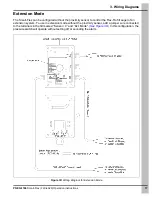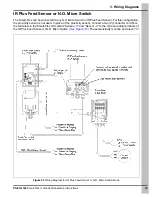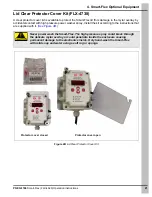
6
PNEG-1186
Smart-Flex (FLX-4629) Operation Instructions
2. Smart-Flex (FLX-4629) Operation Instructions
The Smart-Flex Controller
The Smart-Flex controller has combined several feed system functions into one unit and is now able to
communicate with the Network Master which enables remote monitoring and adjustment. The following
instructions will help you to understand how to set and manage these functions correctly. All four (4)
functions below can be programmed with the toggle switch in the
OFF
position or in the normal operating
mode. The display must be flashing in order to make changes to any settings. The “
Set/Clr
” button must
be pushed to save the desired settings.
Setting the Delay Time
The
Delay Time
is defined as: The time after feed is no longer detected before the auger begins. It is used
to prevent the auger from short cycling. The best
Delay Time
setting is the longest time that can be set
that will not quite allow a feeder to go empty. The
Delay Time
can be decreased as the animals in a barn
get older and eat more or it can be permanently kept at the minimum time that will work for all situations,
including when the animals are older.
To Set the Delay Time
1. Push the
PROG
button until the green LED next to the
Delay Time
begins to flash.
The display will also flash with the 4 digit current setting.
2. Push the arrow button up or down to increase or decrease the
Delay Time
.
The
Delay Time
can be adjusted in one minute increments, within a range between zero and
99 hours and 59 minutes. By pushing the arrow button once, the time will increment by one minute.
By holding the arrow button down, it will increment at a faster rate.
3. Once the
Delay Time
is set, push the
Set/Clr
button to save the new setting.
During normal operation of the
Delay Time
, when feed is no longer detected, the green
Delay Time
LED will turn on and the display will show the time left before the auger starts. When the displayed time
reaches zero, the green
Delay Time
LED will turn off and the green
Run Time
LED will turn on and the
auger will begin to run.
(See Figure 2A.)
Figure 2A Delay Time







































